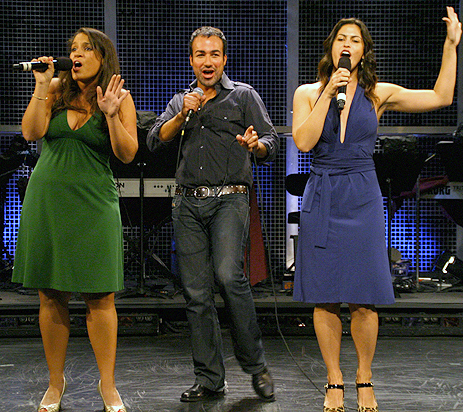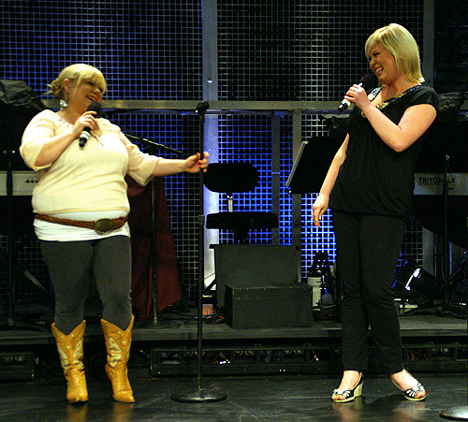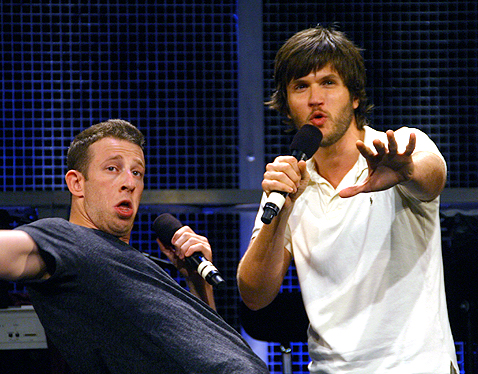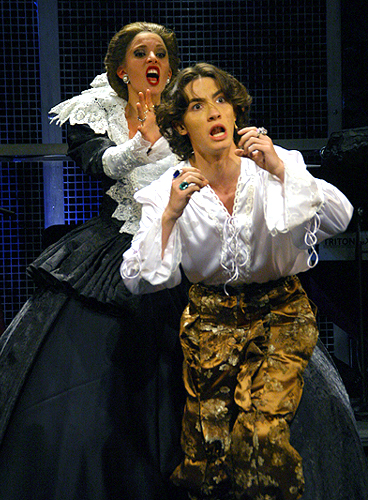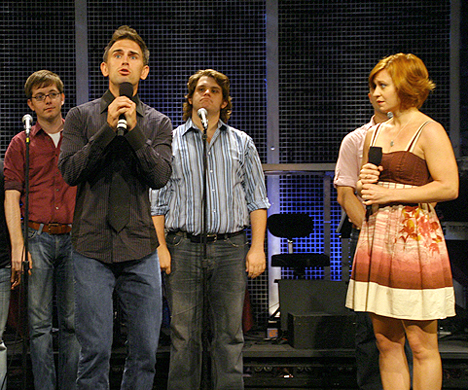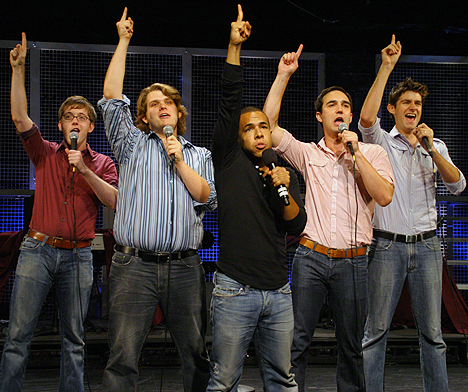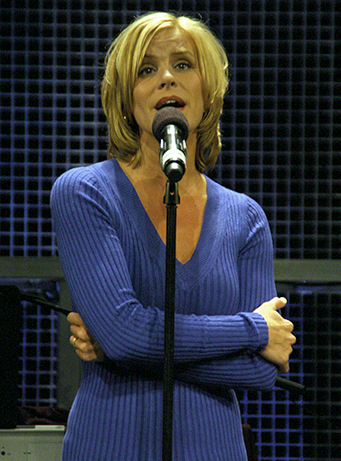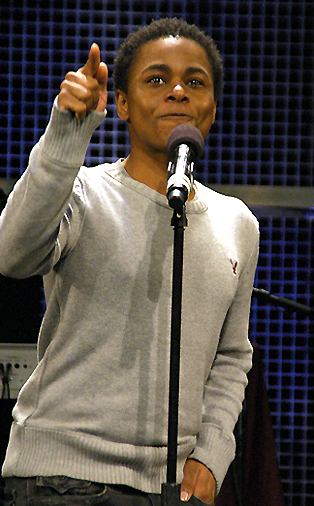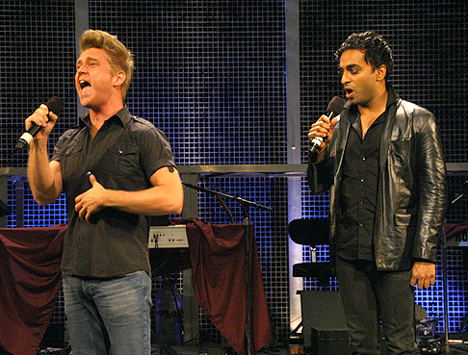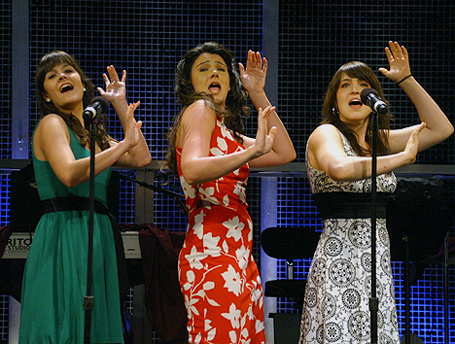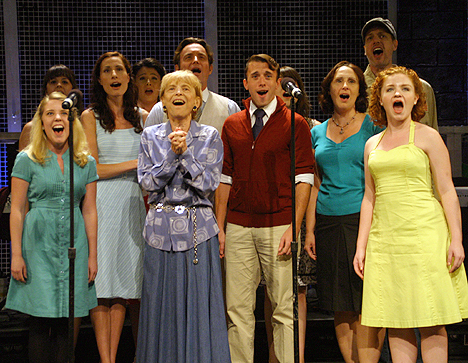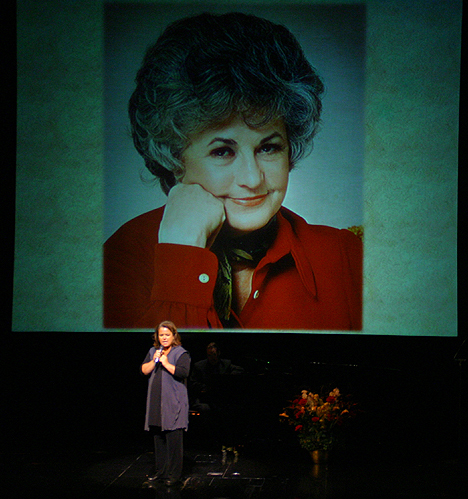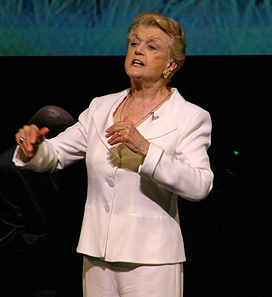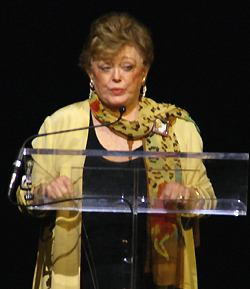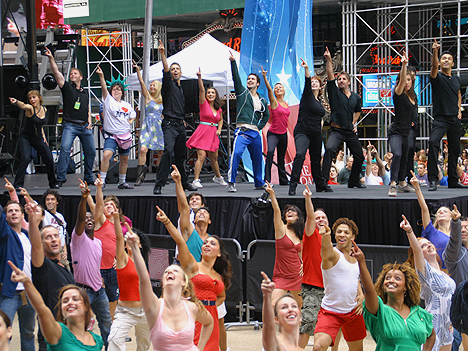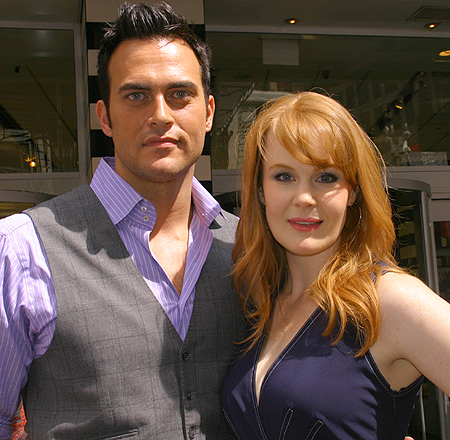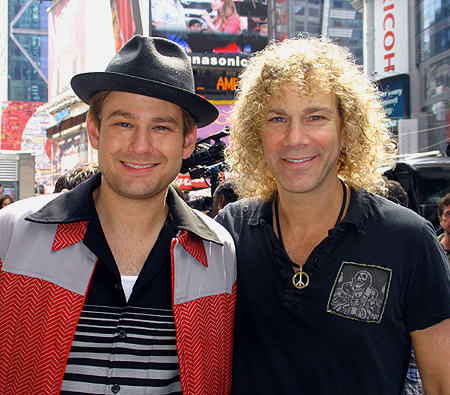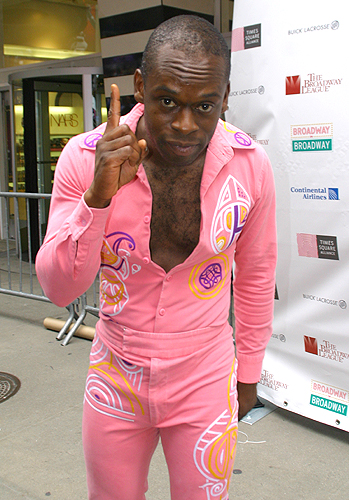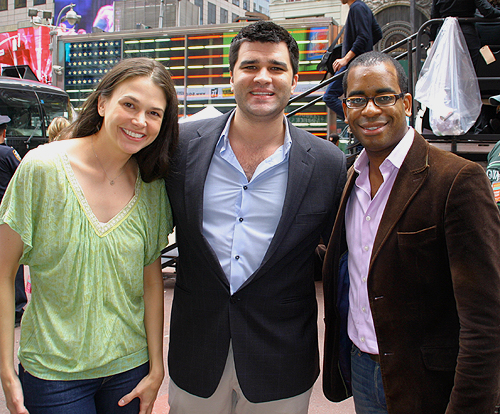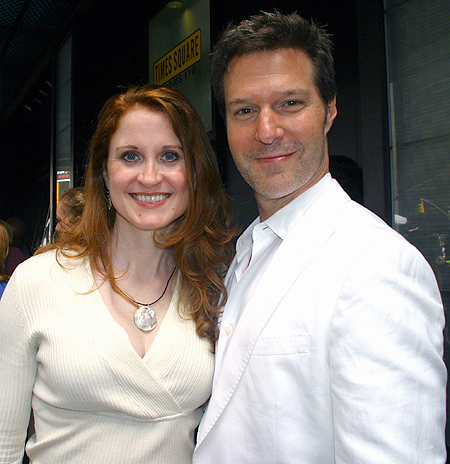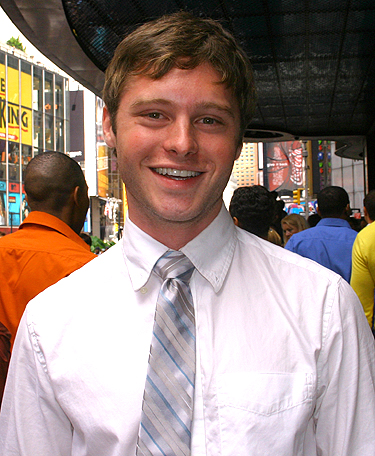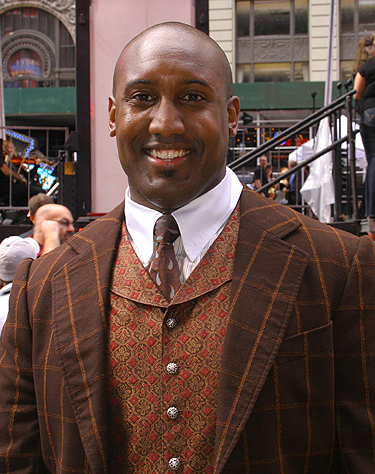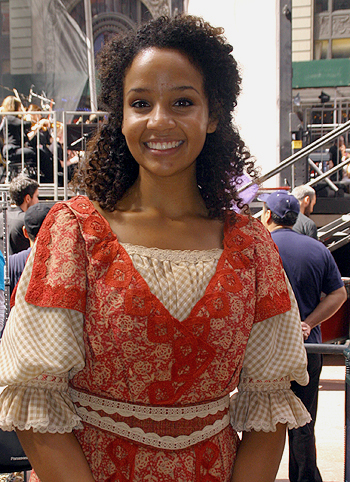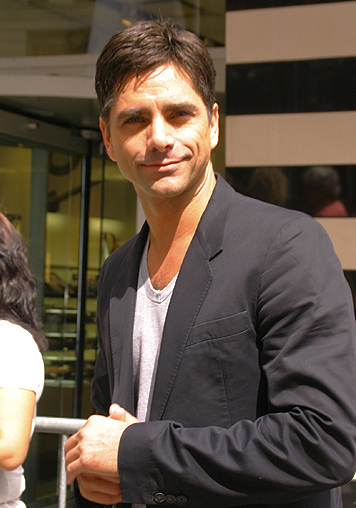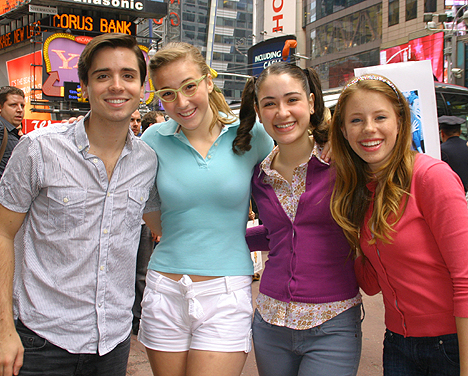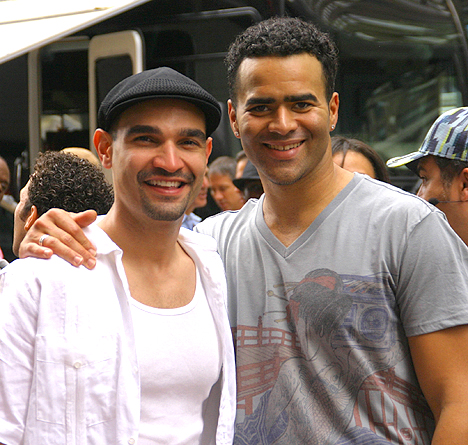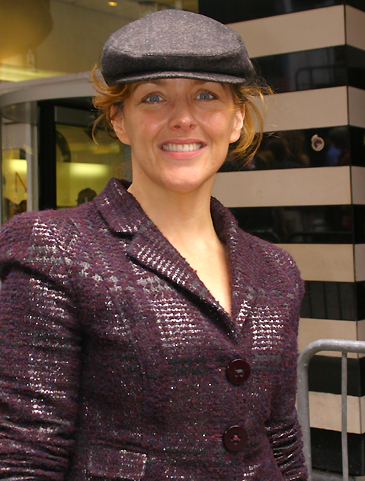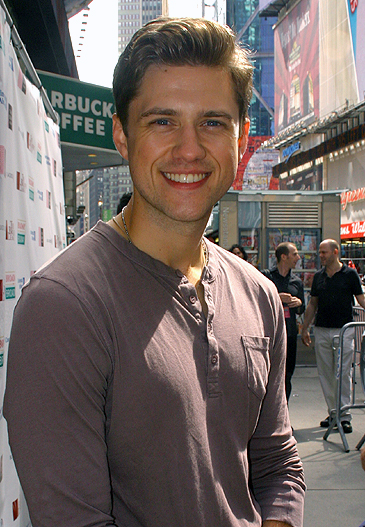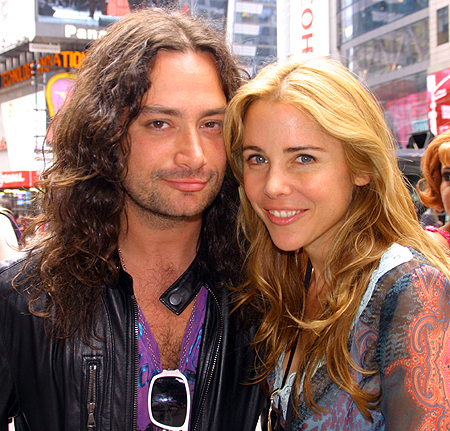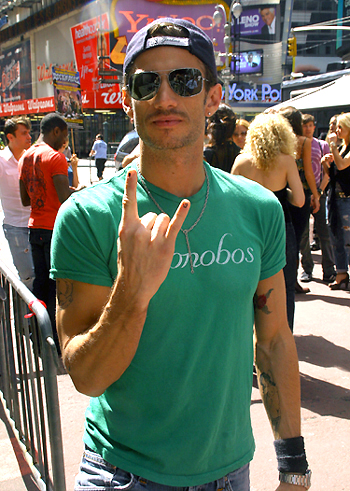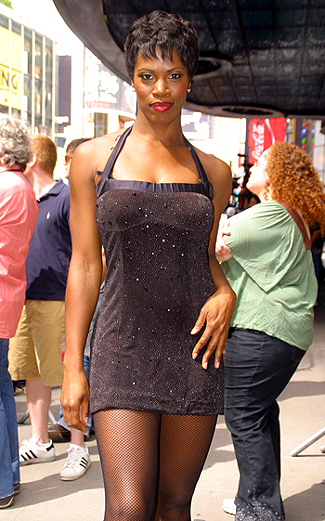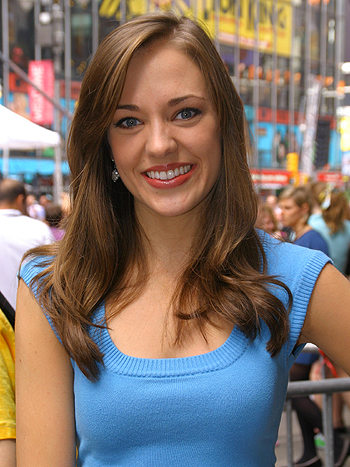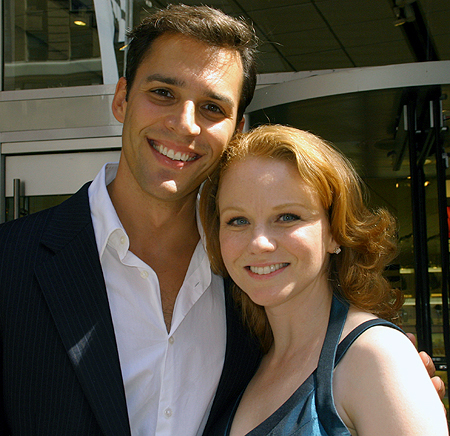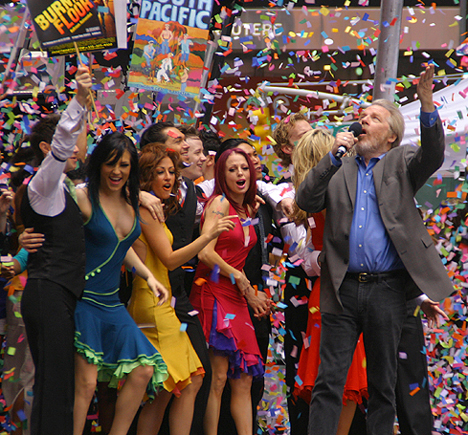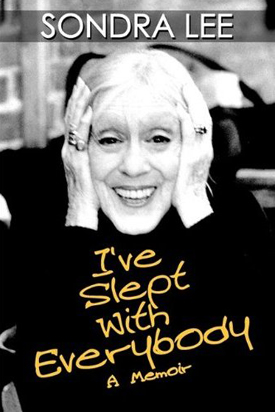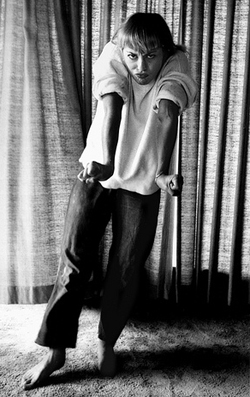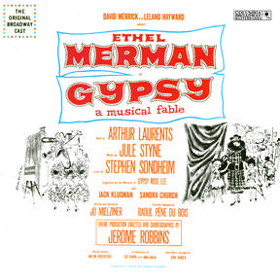
At a pivotal moment in the first act of Mame, the title character turns to her bosom buddy and enthuses, "Oh Vera, I can't wait to hear that overture!" I'm sure we all share the sentiment. There's nothing like a good overture to whet our appetite for the show we're about to see or the recording we're about to hear. Charles Burr, one of the best-ever writers of cast album liner notes, put it succinctly and unforgettably when he described the Mame overture as "a kind of menu in music for the feast to follow."
Sadly, very few new musicals have traditional overtures -- primarily because of a perceived lack of attention on the part of audiences, who are thought to need some sort of visual stimulation in order to keep them focused and make them feel the show has actually started. All the more reason to celebrate the overtures of musicals past. And while we're in a celebratory mood, let's also applaud the recent Broadway revival mini-trend of having classic overtures played by large orchestras in full view of the audience, as in Lincoln Center's South Pacific and the most recent productions of Gypsy and Oklahoma! Then, of course, there's the City Center Encores! series, which regularly affords us the same treat.
Here are my own personal choices of the 12 greatest overtures ever written, listed in chronological order based on when each show opened and followed by some runners-up. Since Broadway overtures are almost always the work of the arranger/orchestrator rather than the composer, I have listed all involved parties for each entry. (Two overtures that might well have made this list have been excluded because they're technically ineligible: the terrific Kiss Me, Kate "overture" that's heard on the original cast album of that show is actually the entr'acte, and the lush overture heard on the now-out-of-print Hello, Dolly! cast album with Pearl Bailey and Cab Calloway was written expressly for the recording and never played in the theater.)
Please feel free to email me and let me know which of your favorites aren't among my winners and runners-up -- but before you do, note that my choices were made only from the pool of overtures that were written to be performed as purely musical pieces, with no accompanying action on stage. That's why the legendary openings of Carousel, Follies, A Little Night Music, and any number of other shows are not mentioned below. So, are you ready? Here comes the downbeat...
********************
SHOW BOAT; music by Jerome Kern, orchestrations by Robert Russell Bennett.
It wasn't until 1988, when the late John McGlinn's landmark complete recording of Show Boat was released, that most people alive today got a chance to hear the overture to this seminal musical as it was heard at the Ziegfeld Theater in 1927. Whereas the various overtures heard on various revival cast albums of the show are much lighter and brighter overall, the original is a generally dark-hued, symphonic, mini-masterpiece. It opens with an almost shockingly dissonant chord that leads to a bleak statement of the "misery" theme. After snatches of melodies from "Can't Help Lovin' That Man," "Where's the Mate For Me?" and "It's Getting Hotter in the North," we hear the unsettling "Mis'ry's Comin' Aroun'" -- the choral version of which was cut from the original production -- followed by strains of "Ol' Man River." Those two dark themes and the "misery" theme continue to dominate the overture until we finally get a full statement of an up-tune, "Why Do I Love You." This in turn brings us back to "Mis'ry's Comin' Aroun'," as if to drive home the point that the show's characters have plenty of travails and tragedies to go along with their joys and triumphs.
FINIAN'S RAINBOW; music by Burton Lane, orchestrations by Robert Russell Bennett and Don Walker.
There's something about the beginning of this overture that's very special. An arresting tremolo is followed by brief snatches of "How Are Things in Glocca Morra?" that eventually lead into a full statement of this lovely melody in its entirety. Later on, we get to hear a swinging treatment of one of the most headily romantic show songs of all time, "Old Devil Moon," and an exciting orchestration of "On That Great Come-and-Get-It Day" This is one of those cases where the original cast album recording of the overture is far from the best, because the piece was severely truncated due to the time limitations of 78rpm recording technology. Indeed, the OBC version doesn't even include "Old Devil Moon"! The only note-complete recording I know of may be found on an album titled Another Openin', Another Show, conducted by the late, great Lehman Engel.
SOUTH PACIFIC; music by Richard Rodgers, orchestrations by Robert Russell Bennett.
The Lincoln Center Theater revival of this classic show is still going strong, so if you haven't yet taken advantage of the opportunity to hear (and see) the show's sweeping overture played by a 30-piece orchestra, I urge you to do so a.s.a.p. My favorite sections of the piece are the opening and closing statements of the majestically beautiful "Bali H'ai" theme. For my money, the performance of this overture on the original cast recording is the best, even though about two minutes of music are trimmed and the the sound is mono. If you want stereo, the LCT cast album is the obvious choice, and it gives you the full version; but I also like the (trimmed) version on the 1965 Music Theater of Lincoln Center cast album starring Florence Henderson and Giorgio Tozzi.
PETER PAN; music by Mark Charlap and Jule Styne, orchestrations by Albert Sendrey.
This show might have been a mess, as a troubled gestation led to the original score by "Moose" Charlap and Carolyn Leigh being augmented with several songs by Jule Styne, Betty Comden, and Adolph Green. But as it turned out, Peter Pan is a cohesive delight, and so is its magical overture. The OBCR performance is good but the monaural sound is a little thin, so you should also listen to the (slightly reorchestrated) overture on the studio cast album starring Cathy Rigby.
MY FAIR LADY; music by Frederick Loewe, orchestrations by Robert Russell Bennett.
As I've previously written, if the thrilling fanfare that begins this overture doesn't set your pulse racing, you've probably already shuffled off this mortal coil. Said fanfare leads into an almost breathless statement of "You Did It," a song that has a relatively minor place in the score but is perfect for getting the show going with the musical equivalent of an adrenaline rush. The rest of the overture -- including beautiful orchestrations of "On the Street Where You Live" and "I Could Have Danced All Night" -- is also pretty great. The best recorded performance is to be found on the original Broadway cast album, even though it's mono rather than stereo. Other excellent versions are on the 1976 Broadway revival cast album, the original German cast album, and the studio cast recording that stars Kiri Te Kanawa and Jeremy Irons. Whatever you do, avoid the cast album of the 2001 London revival, the first production to stupidly jettison the brilliant original overture and replace it with a vastly inferior new piece.
CANDIDE; music by Leonard Bernstein, orchestrations by Hershy Kay.
While there is brilliance throughout the Candide score, I'm convinced that the tremendous popularity of this sparkling overture is largely responsible for the fact that the show has been revised and revived countless times even though, to be honest, it never really works. By the way, this overture is rare in featuring some musical material that was written specifically for the piece itself rather than consisting entirely of instrumental settings of songs from the show. The OBCR version is expertly conducted (by Samuel Krachmalnick) and well recorded in stereo; for even better sound and an even larger orchestra, check out Bernstein's 1960 performance with the New York Philharmonic.
GYPSY; music by Jule Styne, orchestrations by Sid Ramin and Robert Ginzler.
What can I say that hasn't already been said? The brilliant treatment of the stirring, recurring "I had a dream" motif alone would mark this overture as genius, but the truth is that it's musical theater heaven from start to finish. Although the OBCR performance is definitive, any number of subsequent recordings are also excellent. In fact, the only unsatisfactory reading is the one you'll find on the London cast album starring Angela Lansbury. Beginning without the traditional timpani roll and cymbal attack (horrrors!), it's further marred by weird tempos and two flubbed trumpet notes that the album producer somehow allowed to get by. This performance is unique in doing a disservice to the Broadway overture that is most often cited by enthusiasts as the best of the best.
FUNNY GIRL; music by Jule Styne, orchestrations by Ralph Burns.
Another symphonic gem. The show is pretty much all about Fanny Brice -- or, rather, Barbra Streisand as Fanny Brice. Yet the theme that dominates the overture is "Nicky Arnstein, Nicky Arnstein," Fanny's plaintive invocation of the name of the dashing gambler who's the love of her life. This unforgettable phrase opens the overture in the brass, recurs throughout as played by other instruments (strings, French horn, xylophone), and then is blasted out again by the trumpets at the very end after an almost desperately upbeat statement of "Don't Rain on My Parade," as if to drive home the point that Fanny can't help lovin' that man of hers.
SWEET CHARITY; music by Cy Coleman, orchestrations by Ralph Burns.
Yet another overture that achieves its power through a near symphonic development of the musical themes contained therein. This one rivets our attention from the get-go with a brazen trumpet statement of the vaguely sinister, pounding, tawdry figure that begins one of the show's most famous songs, "Big Spender." The body of the overture includes such sprightly tunes as "If My Friends Could See Me Now" and "I'm a Brass Band," but the piece ends with that same brazen trumpet theme, foreshadowing that Charity Hope Valentine's search for true love will be thwarted by the brutal fact that she makes her living as a "good-time girl."
MAME; music by Jerry Herman, orchestrations by Philip J. Lang.
The string tremolo at the beginning, followed by that tremendously exciting upward surge, is the best part of this tantalizing "menu in music." I also love the fanfare leading into the march that in turns leads into a sparkling arrangement of "Open a New Window," and -- of course -- the wonderfully brassy treatment of the title song that caps the overture. Along the way, we also get to hear a fabulously jazzy rendition of "That's How Young I Feel."
NO, NO, NANETTE; music by Vincent Youmans, orchestrations by Ralph Burns, musical direction by Buster Davis.
I have no idea what the overture of the original 1925 production of this show sounded like, but the piece that (as I understand it) Davis and Burns came up with for the landmark 1971 revisal unquestionably deserves a place of honor in any survey of Broadway's greatest overtures. According to Don Dunn's fascinating book The Making of No, No, Nanette, the orchestra's run-through of the overture during the sitzprobe buoyed the demoralized company of a show that smelled like a flop but went on to become a smash hit. Listening to the cast album, it's easy to understand why.
THE LIGHT IN THE PIAZZA; music by Adam Guettel, orchestrations by Guettel and Ted Sperling, additional orchestrations by Bruce Coughlin.
If you saw Piazza during the first two weeks or so of previews at Lincoln Center Theater, you got to hear its overture intact. Thereafter, this transcendently beautiful piece -- which prominently features the show's lyrically yearning title song -- was cut so severely that what remained could scarcely even be called a brief prelude. As noted above, the cut was made under the assumption, perhaps correct, that Broadway audiences won't sit tight and listen to an overture unless something is happening on stage at the same time. Luckily, the cast recording documents what was lost in performance.
Runners up: Oklahoma!, The King and I, Kismet, The Most Happy Fella, Bye Bye Birdie, Camelot, A Funny Thing Happened on the Way to the Forum, Man of La Mancha, Promises, Promises, Sugar, Mack and Mabel, On the Twentieth Century, Merrily We Roll Along.
